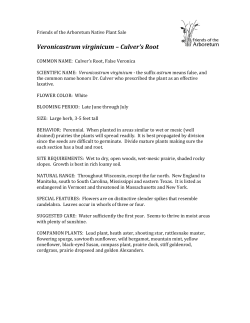
Boback Ziaeian The Message of Public Health Across the vast
Boback Ziaeian The Message of Public Health Across the vast uninhabited plains of middle-America, the prairie dog is a simple representation of public health. Prairie dogs form large colonies or towns comprised of family units that span hundreds of acres. One remarkable characteristic of the species is the utilization of a sentinel watch. If a threat is apparent, such as a diving hawk, the prairie dog will bark an alarm notifying colony members of the danger and enable others to seek shelter in the underground burrows. The field of public health is mankind’s sentinel watch, continuously monitoring for potential health threats and mobilizing to avert preventable harm where possible. The World Health Organization defines public health as “all organized measures (whether public or private) to prevent disease, promote health, and prolong life among the population as a whole.” Despite this, the public remains generally unaware of the work public health researchers and field workers provide. This lack of comprehension and recognition is partly a condition of how large and complex the scientific field public health encompasses is. The promotion and protection of human health is not a singular organized challenge. Networks spanning global, national, and local agencies and institutions are tasked with monitoring diseases and intervening where resources and political will allows. The historical lens provides a staggering perspective on the immense power of public health. The Panama Canal remains one of the seven wonders of the modern world today. Perilous shipping routes around Cape Horn had hindered trade for centuries. From 1881 to 1894, the French attempted the immense engineering feat of traversing the Panamanian Isthmus. However, high mortality rates from yellow fever and malaria made recruiting and maintaining an experienced workforce unmanageable. When the United States took control of the construction efforts in 1904, they appointed Colonel William C. Gorgas as chief sanitation officer. Colonel Gorgas implemented mosquito control interventions based on the research of Dr. Carlos Finlay and Dr. Walter Reed who discovered mosquitos were vectors for both yellow fever and malaria. Within two-years of implementation of sanitation efforts, mosquito borne diseases were nearly eliminated among canal construction workers. In 1914, the United States went on to complete the Panama Canal in large part to public health measures founded on studying a population at risk, understanding the mechanism of disease transmission, and implementing appropriate preventative measures. Since 1900 the average life expectancy in the United States has increased more than 30 years. According to the CDC, public health measures account for 25 years of the increase. These gains are attributed to vaccination, antibiotic therapy, improvements in cardiovascular health, healthier foods, and safer workplaces. Diseases that once were a heavy burden on children and adults – such as smallpox, rubella, and haemophilus influenza to name a few – are now extremely rare or eradicated in the case of smallpox. The success of public health measures often results in a previous scourge no longer being as common. Over generations, successes in prevention go unnoticed as targeted diseases are no longer regular occurrences among the population. As public health researchers and workers, we must continuously educate the public about prior successes and current challenges. In explaining good health, Sigmund Freud emphasized one’s ability to love and work. As public health leaders, our goal is to enable the potential to love and work within each and every individual. Although we have made tremendous strides in improving health, there remains a tremendous burden of preventable and treatable diseases. We must be the sentinel prairie dog known to our communities locally and promote public health nationally and internationally. Through education, advocacy, and Boback Ziaeian consistent messaging, we can recruit the general population in maintaining their individual health and supporting public health services and research within their communities.
© Copyright 2025





















